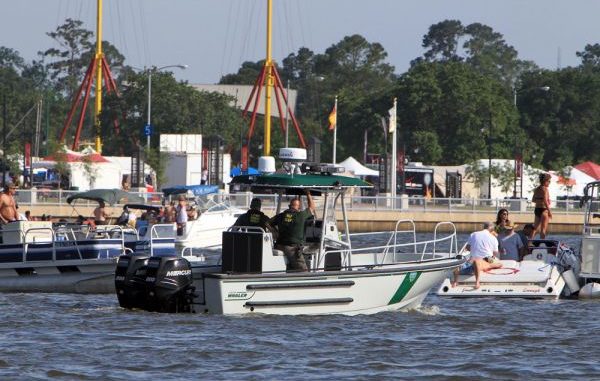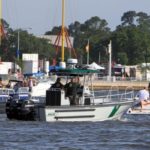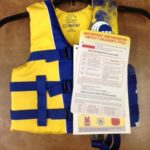
Summer is finally here after a cold winter and lingering cool spring. Warmer temperatures put us in the mood to get out on the water for a variety of boating activities.
While Louisiana offers seemingly endless open waterways for recreational boaters, few if any are not used by a variety of boaters operating a wide range of vessels. Before venturing out on the water, consider a few facts, and take the time to plan and prepare for boating safety.
Vessels range in size from personal watercraft to boats in excess of 26 feet in length. Experience levels among operators go from short to long, as well.
Though all persons born after Jan. 1, 1984, are required to complete a National Association of State Boating Law Administrators-approved boating education course to operate a motorboat over 10 horsepower and must carry proof of such when operating the motorboat, the law has been watered down a bit.
The requirement allows for a boat to be operated if any person on board or participating in any boating activity from the motorboat is over the age of 18, and if required to have completed a boating course, has completed the required boating safety course. It’s sort of like allowing your unlicensed child to drive the car if you are sitting in the back seat.
But be that as it may, the point is operate defensively on the water because the same person driving along the highway while texting on the phone could now be behind the wheel or at the tiller on the boat, without benefit of any training or experience.
The size of the boat or watercraft in question dictates the quantity and type of safety equipment required and that can be confusing to some.
Personal floatation device requirements are particularly so, since most beginning boaters don’t understand the different types of PFDs.
U. S. Coast Guard-approved Types I, II, III and V are wearable, meaning simply that they are worn by the user. Types I, and II are best for small children, since they will right the wearer and turn them face up in the water without assistance. Type IIIs won’t right the wearer without conscious assistance but are more comfortable and are a good choice for older children and adults in calm waters where rescue would be imminent.
Becoming ever more popular are the very comfortable auto/manual inflatable Type I, II, and III PFDs. They inflate automatically when immersed in water, and are great. But they require regular inspection and maintenance to ensure the inflation cartridge will work when needed, and they cost more than inherently buoyant models.
Type Vs are hybrid special-use devices such as work vests for offshore vessels and platforms. They are not acceptable for children 16 years of age and younger on boats less than 26 feet in length.
Kids must wear Type I, II, or III PFDs while underway. Those onboard over age 16 on boats under 26 feet may wear a Type V, but are still required to have a Type I, II or III readily available.
If the boat is less than 16 feet and propelled by a hand tiller outboard, everyone on board must wear a Type I, II, III or V PFD while the motorboat is underway.
Hand-tiller operated outboards over 10 horsepower on boats less than 26 feet also require an engine cut-off switch link attached to the operator.
The Type IV PFD is another point of confusion. Ring buoys and buoyant boat cushions are Type IV devices. They are not intended for wear; rather, they are to be thrown to a person in the water. But I have seen a few people try to wear one if it was the only thing on board and the boat was approached for a safety inspection.
Type IV’s are required on boats of 16 feet to less than 26 but are a good idea on a boat of any size.
Other optional safety equipment items are nighttime visual distress signals. They are required on all boats but only in federally controlled waters. Why anyone would go any on any waterway inland or otherwise without them is beyond me. The same goes for a horn, bell or whistle. They’re required on 16- to 26-footers but I want them in my boat regardless of length.
The Type B fire extinguisher is required on every motorboat, and we all know that. But make sure the needle is in the green and PLEASE stow it forward away from the engine compartment where a fire is most likely to start. It doesn’t do much good if it’s burning up along with everything else in the fuel storage area.
Navigation lights are required on all boats operating between the hours of sunset and sunrise. But even if you don’t intend to run at night, make sure your boat is equipped with them and they are working properly. An unexpected delay or breakdown may cause you to be on the water after dark.
I’ll devote a few final words to nighttime boating since the level of risk increases dramatically when operating after dark for a number of reasons. Most obvious is the fact that the operator is not able to see unlit objects and avoid collision, a common cause of nighttime boat accidents. Compounding the problem is reduced reaction time due to limited visibility.
Even lighted objects can cause confusion and disorientation, as was determined during the investigation of a fatality boat accident involving a nighttime collision between two boats.
Wildlife agents investigating the accident determined that the operator of the boat underway confused the anchor light of the other boat (which was sitting motionless) with background nightlights on docks and peers along the shore. Dismissing the anchor light as just another dock light on shore the operator never slowed or steered away and ran over the sitting boat, killing two men.
Store a good spotlight on board for nighttime travel. Use it to find the way and to get the attention of any other boats in the vicinity. Most importantly, slow down to low speed allowing enough time to steer clear of fixed objects and maintain a safe course in boat lanes and channels.
This column is by no means a complete listing of all safety equipment and regulatory requirements. Find out more about Boater Education at www.wlf.louisiana.gov. More information about PFD’s and other boating safety tips can be found at http://www.uscgboating.org. Or talk to a wildlife enforcement agent about boating safety and have a safe summer.




